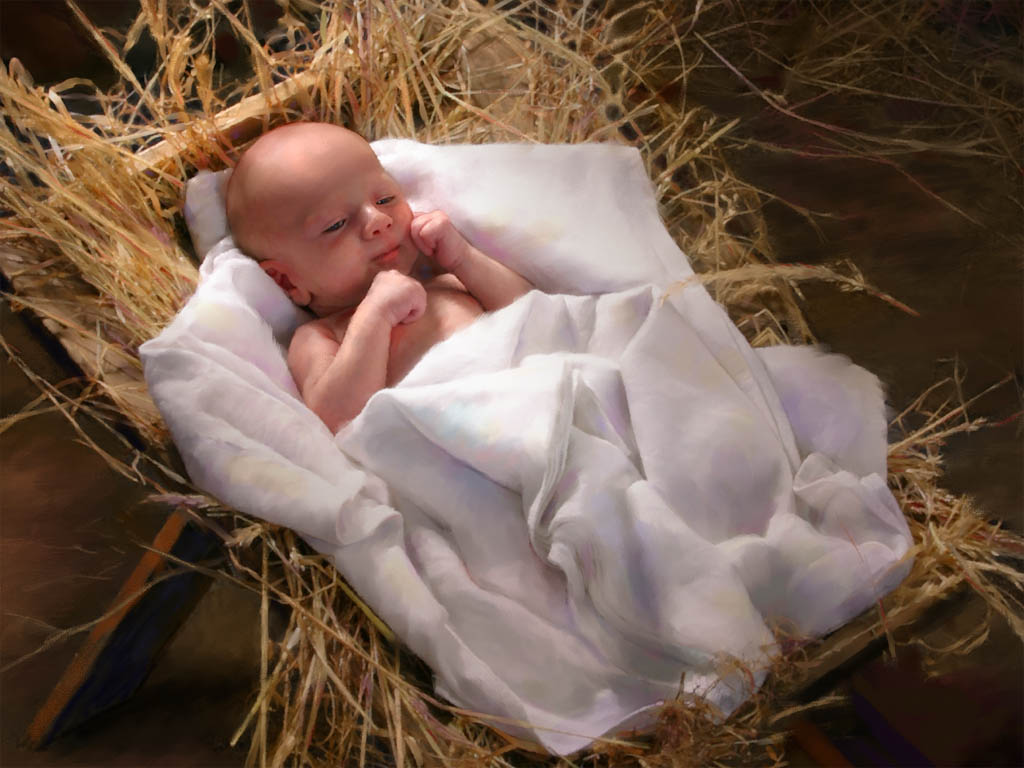Ancient humans knew how important the sun is to this world and to our lives and to all life on earth. Without the sun there would be no surface life, no evolution, no nothing. The ancients did not see the sun as belonging to anyone on earth, it belonged to “God.” It was “God’s sun” and it “lived” up in heaven. God’s sun was His son because the sun was God’s visible representative. God was unseen (Christians address him by his Egyptian name at the end of every prayer: Amen or “What is hidden”
Amen and Amen-Ra, Egyptian Gods) but was glorified through his sun/son. There is no other heavenly body like it and so the sun is God’s Only-Begotten Son. God’s sun is our savior because he gives us light, warmth and life—the Light of the World (John 8:12). Without him, nothing blooms or grows. The earth would be dark, cold and inert. God’s sun is constantly streaming forth his life-energy to the earth, hence God’s sun gives his life that we might live.
God’s sun, however, disappeared each night and could only give his life for us provided he return. Then he is buried in the grave where he is assailed by demons and devils as he traverses the darkness of hell (Amenta or “hidden earth” or the underworld). And every morning, he rises triumphant from his grave in the earth and lives again and rejuvenates the earth. This happens every morning without fail and so that is the covenant between God and man.
And even if the individual should die, the earth will go on forever receiving life from God’s sun—life everlasting. God gave us his only-begotten sun so that through him we may have everlasting life. Not a promise to individuals but to the earth itself. Without him, the world is thrown into darkness. For the ancients, nighttime was a very fearful time. Today we have electrical power to drive away the darkness but the ancients had only torches and lamps. Nighttime was truly black as pitch for the ancients, they did not have our light pollution. For those who have been on the ocean at night aboard a Navy ship which blacks out all exterior lights at night, one cannot literally see ones hand in front of ones face. Nighttime is really that black. During this time, animals went on the prowl—dangerous predators that could see in the dark, smell in the dark and hear in the dark far better than any human. Wild cats, wild dogs, venomous snakes and scorpions could be encountered at any time. The darkness was a time of great uncertainty and fear. So John 3:16 reads:
And just as Moses lifted up the serpent in the wilderness, (The Life Principle personified as Moses raised the bronze serpent—the sun—over the treacherous wilderness to light the way)
in this way must the Son of man be lifted up (So God will raise up the Sun of men in the morning)
in order that everyone believing might have in him life eternal, (and will fulfill His promise to those of the covenant)
for in this way God loved the world; (because God proves His love to the world by giving the world his sun)
Worse yet, there was a time of the season when the daylight hours grew ever shorter and darkness and cold reigned supreme and there was fear that God’s sun had been overcome by the powers of darkness. The sun’s lowest point in the sky occurred annually on December 21st or 22nd, the winter solstice. During this time, the sun sinks below the horizon near the constellation of the Southern Cross. So the sun died on the cross and the earth went dark (Matthew 27:45). For three days, the sun does not move from this most southward position. Not until the 25th, do we notice the sun starting to rise and set in a progressively more northerly direction. Hence, God’s sun rises from the dead after three days. In the Egyptian stellar cult, Osiris (Orion the Hero) was seen rising at this time. He is the risen mummy. As his constellation rises, the constellations of Set (Scorpio who killed Orion by stinging him on the heel) the Southern Cross are on the opposite horizon descending so the Hero rises to vanquish his executioner and the object upon which he was killed. In the lunar cult, the moon wanes until it vanishes from the sky for three days and then waxes again. All the same “Lord rising after three days” imagery.
But God’s covenant with the world was that his sun would always return. When he did, there would be peace. Indeed “solace” is derived from “solari” or comfort which is related to “solaris” or the sun because we are comforted by the return of the sun. The sun then ascends into heaven. Sure, after rising above the horizon, the sun climbs higher and higher into the sky.

Looking at the above diagram—the true Stations of the Cross—we can see that the entire gospel story of Jesus is a journey of the sun through the zodiac. The zodiac is a belt of constellations that lie on the ecliptic (the sun’s apparent path through the sky). There are 12 zodiacal constellations—one for each month—that the sun “travels” through in the course of a year. First off, Jesus is born in a stall in a stable and “zodiac” means “circle of animals.” He was born between the constellations of the horse (Sagittarius) and the goat (Capricorn).

In some legends, Jesus was born in a cave or grotto. In this version, he ends up dying where he was born—a cave or rock-hewn tomb. That is, the old sun dies where the new sun is born every year. The halo around the head of the infant is an overt solar image—the newborn sun of the new year.
Thirty years later, Jesus is baptized by John the Baptist. Likewise, 30 days after the sun is “born” on Christmas, it enters the constellation of Aquarius imaged as a man carrying two jugs of water. After his baptism, Jesus gathers his disciples from among fishermen and likewise the sun leaves Aquarius and enters Pisces—the sign of the fishes. Christ becomes the good shepherd after this and likewise the sun enters Aries—the sign of the ram or sheep.
Jesus now embarks on his salvation mission just as the sun enters Taurus the bull. The sun’s salvation of man is to simply appear so that the earth is warmed and can be plowed and planted otherwise there will be famine. Hence, the bull or ox is hitched up at this time of year to pull the plow. Then the plants will grow and there will be increase represented by the Gemini twins, the next sign in the zodiac. Christ next speaks of “backsliders” because the sun has entered Cancer where we locate the summer solstice—the longest day of the year. After, that the days grow shorter and the sun reverses direction and starts rising and setting more southward (changes direction like a crab which in Latin is “cancer”). The sun then enters Leo the lion and Jesus becomes the Lion of the Twelve Tribes of Judah—that is, the Lion of the 12 signs of the zodiac which is Leo.
When Jesus has his last supper, it is the Passover meal. Likewise, the sun has entered Virgo and passes over the summer months and enters the autumn. Virgo was often depicted as holding wheat or corn representing the star Spica. Corn or wheat is necessary to make bread which Jesus breaks and distributes to his disciples telling them it is his body.

After passing over into the new season, Libra, the sun goes into decline. Venus is the ruler of Libra so she rules over the time of year when the sun is in decline. She is called the Goddess of Love but is not fulfilling that role now but is driving the sun away—she has betrayed the sun and so she is Judas betraying Jesus and, being the goddess of love and passion, does it with a kiss. Giving her the name of Judas was a nice, little stab in the back for the Jews because the Christian Fathers were saying Jesus was betrayed by Judah, i.e. the Jews. Libra is the scales because here is where the autumnal equinox occurs where day and night are of equal length or balanced and also the time of year when farmers must balance their harvest with their bottom lines. Likewise, Jesus balances his zodiacal cross on his back as he walks to the place of his crucifixion and death.
Satan entered into Judas according to the gospel story and Satan is the Prince of Darkness. This is Scorpio because scorpions must flee from sunlight which will kill them because they have no protection from the ultra-violet light. He is venomous and so this dark-loving poisoner is imaged as influencing Judas/Venus to betray his/her master Jesus/God’s sun. Then Jesus is crucified between two thieves—the light- and harvest-stealers Scorpio and Sagittarius. Jesus dies at the end on the winter solstice, the shortest day of the year. Then, as pointed out earlier, he revives three days later—Christmas.
But didn’t Jesus die on Good Friday and revive on the Sunday after Passover in March? That’s because Aries was seen by the ancients as the beginning of the year and not January. So Jesus revives at the start of the New Year just as the sun also returns to warm the earth. The three days dead in this case are representative of the three months from December to March. And isn’t it odd that the gospelic Jesus rises on a Sunday—the sun’s day? He dies on Friday named for the goddess Freya or Frigga who is the Norse equivalent of Venus—the same one who betrays god’s sun in the sign of Libra and causes his death, then he rises on his day, the day of the sun. Odd too that the Christian day of rest is Sunday rather than Saturday, the Jewish Sabbath. Actually, early Christians did rest on the Sabbath but Constantine proclaimed Sunday to be the Christian day of rest in accordance with the Roman sun-worshipers. This actually makes more sense than the gospel story because if Jesus died on Friday, there is no way he could lay in the grave for anywhere close to 72 hours if he was resurrected on Sunday. At best, he was dead maybe 40 hours but very possibly under 36. But Christians don’t seem to notice the impossibility of three days passing from Friday to Sunday. He would have risen on a Monday so why didn’t they just say Monday? Because he is the sun and we can’t very well say that the sun was resurrected on the moon’s day (Monday), can we? Again, this flaw in the gospel story betrays its astrological basis and argues against any historical basis.
During the later periods of Roman history, sun worship gained in importance and ultimately led to what has been called a “solar monotheism.” Nearly all the gods of the period were possessed of solar qualities, and both Christ and Mithra acquired the traits of solar deities. The feast of Sol Invictus (Unconquered Sun) on December 25 was celebrated with great joy, and eventually this date was taken over by the Christians as Christmas, the birthday of Christ.
sun worship (religion) -- Encyclopedia Britannica

Sol Invictus (a.k.a. Mithra) wearing the spiky solar corona which Christians call the Crown of Thorns.
Christianity is mainly a solar religion. Islam is lunar since its various holidays as Ramadan commence with the appearance of the moon. Judaism is solar now but was originally lunar. We know this because the Jewish calendar is 354 and occasionally 355 days long which is the lunar year but now has seven intercalary months inserted to make the lunar calendar align to the solar once every 19 years. Why didn’t they switch over to a solar calendar instead of complicating the lunar one? Because their holidays were already set during the time when the religion was lunar and, by Jewish law, cannot be changed. Christianity does seem to have a lunar cult holdover with Easter (which happens to be named after the pagan Goddess of Spring—Venus, Eostre, Ostara, Esther, Ishtar, Inanna, etc.). According to the Catechism of the Catholic Church, Part II, paragraph 1170: “…Easter, the Christian Passover, should be celebrated on the Sunday following the first full moon (14 Nisan) after the vernal equinox.” The vernal equinox, of course, being the first day of spring. How odd that this most important of holidays to Christians is not determined by anything about an earthly Jesus but solely by a celestial event during a specific part of the calendar.
This is not an attempt to belittle Christianity but to illuminate it. Sun worship is sensible from the point of view that the sun is responsible for most of the life on earth (there are tube worms that grow on active volcanic fissures in the ocean where no sunlight reaches so life—albeit primitive—could still exist here without the sun but obviously it would be very limited). Understanding that Christ is the sun moving through the zodiac and that we are each suns of “God” also journeying endlessly through life after life makes Christianity a more laudable and palatable religion for those who find the idea of going to heaven or hell for eternity after only one life during which we learn so very little about anything to be questionable. We don’t live once and hope we go to heaven. We die and are resurrected untold numbers of times in hopes of reaching perfection. As the old saying goes, “We are not humans on a spiritual journey; we are spirits on a human journey.”
So are we saying that Jesus never existed as a human being and that astrological solar data was dishonestly passed off as historical? That’s another argument for another time. We’re not concerned with whether Jesus Christ actually existed historically at this point. What we are saying is that Christianity is chock full of solar imagery and the reader can puzzle out how and why that occurred.
I have been criticized by Christians for this article. One wrote to me: “This was obviously not written by a Christian. It is about Jesus not a thermonuclear reaction.” My response is that the ancient people obviously did not know what the sun was or how it worked, i.e. that the sun is a huge breeder reactor composed mostly of hydrogen gas and maintains its mass and size by equalizing the gravitational pressure pulling inward with the thermal pressure pushing outward, they knew only that the sun was glorious, mysterious and that they could not live without it. The idea that they would have ignored the sun and figured it had nothing to do with anything is not borne out by the fact that ancient cultures and societies the world over were virtually obsessed with the celestial bodies and their movements going back to the Stone Age and with the sun in particular.
The other problem I have with pronouncing worshipers of God’s Sun as “not Christian” is that where exactly then do we draw the line at what constitutes “Christian”? For instance, there are rightwing Christians who have so heavily politicized their religious views that they go so far as to pronounce anyone who votes for a democratic candidate as “not Christian.” I have met Protestants who do not believe Catholics are real Christians and there are Catholics who insist Protestants have perverted the Will of God into a false Christianity. Jehovah’s Witnesses don’t believe Protestants or Catholics are real Christians or at least have very flawed Christian belief systems. Christianized Jews don’t believe any other group of Christians are genuine because the earliest Christians were Jews and so on. Basically, if you consider yourself a Christian and pronounce another group of believers as “not Christian” because their tenets differ greatly from yours, rest assured there is yet some other group out there saying the same about you because your tenets run counter to theirs. In short, Christians should be very careful about whom they label as “not Christian.”
In the early days of Christianity, there were a great many sects that believed wildly different things about Jesus Christ. We can still find these in the Canon. The Epistle of James offers a radically different view of Jesus Christ than the gospels. We are told nothing about him and get no indication that he had ever walked on earth much less been crucified and resurrected. Hebrews refers to Jesus as a high priest on the order of Melchizedek who achieved this rank in heaven but was an ordinary human on earth who was adopted by God to occupy this heavenly office. Revelation refers to a “Son of Man” holding seven stars in his hand, wearing a “girdle” around his “paps” and who was crucified in Egypt. Paul’s writings are the earliest of the Christian writings, written decades before the gospels, and yet do not even once refer to the earthly life of Christ nor quote anything this Christ had said. Paul does not mention a virgin birth, a Mary or Joseph, a baptism by John, miracles, a gathering of disciples, an arrest or a trial. No mention even of Nazareth. In fact, Paul never talks about where Jesus walked or when. For a man said to have been a contemporary of Jesus, we should certainly find this very odd. Inexplicable really. And the four gospels do not even agree with one another. So no Christian can believe in the entire Canon without completely contradicting himself and any Christian who insists he can must do so only by being ignorant of what is written therein. Therefore it is impossible to say that a person who claims to be a Christian is not. Even if one were to point out a hateful, crude klansman burning a cross as an example to the contrary there are passages in the bible where God specifically approves of racial hatred to the point of approving of the murdering of those who engage in interracial unions. A Christian cannot claim that God is about love and square that with the atrocious genocide that appears in the book of Joshua. Hence, a Christian—any Christian—believes what he wants to and remains a Christian. Anybody is a Christian who says they are. And so a sun-worshiper is a Christian if he feels he is one.
Again this is not meant to belittle Christianity nor anyone who follows it. I am simply asking that if we are going to proclaim a person who claims to be Christian as not Christian, how do we make that determination? Where do we draw the line and who gets to draw it?
Christians generally find that their religion being sun-worship unacceptable. After all, the Tanakh rails against sun worship (Ezekiel 8:16). If the Christian Canon only referred to the sun whenever it mentions Christ then the story told therein is false and there is no redemption, no salvation. This is not really true. Christianity as sun worship is not merely astrology. There is a deeper meaning behind the solar allegory. Sol Invictus is our own unconquerable spirit or consciousness that cannot be extinguished. As the sun rises everyday and sets every night only to rise again so our spirit goes through many lives and many tribulations and many judgments and many executions only to rise again. The sun nailed to the cross is a depiction of the spirit taken from its divine source and “nailed” to the cross of matter (composed of the four elements) to form the body and its consciousness where it will live in sin and temptation and then die only to rise again and again as it moves closer and closer to moral perfection. We are not separate entities but One illuminated by the same light of “God” from within as his sun illuminates us all from without. We are united by the Light of God, i.e. your consciousness and mine both come from the same source—God. So to know ourselves is to know God. To know God is to know ourselves. There lies your redemption and salvation.





















































 Linear Mode
Linear Mode
